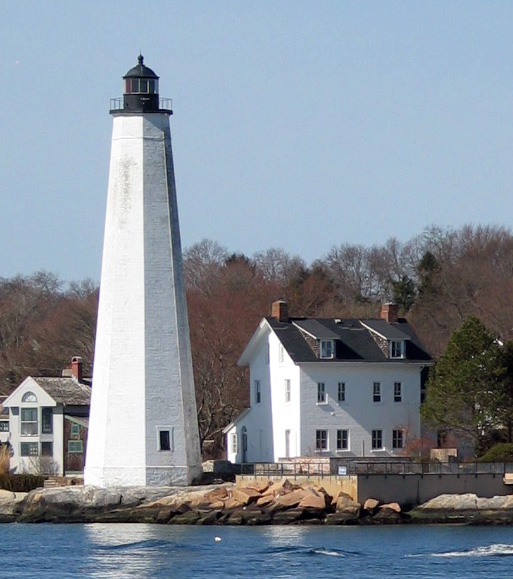Why New London, Connecticut?
The USCG shares a rich history with New London and the surrounding Southeastern Connecticut area. Additionally, the geographic location of the planned Museum, situated mid-way between New York City and Boston, serves as a gateway to the New England states via heavily traveled I-95.
Historic Significance
The New London Harbor Light was built in 1761. It is the nation's fifth oldest light station and the seventh oldest U.S. lighthouse; it is both the oldest and the tallest lighthouse in Connecticut.
The City of New London also served as homeport to the USRC ARGUS, one of the original 10 Revenue Cutters. The USRC ARGUS was built in New London and rigged in Niantic, and began service in 1791. She was by far the longest serving (13 years) of the original 10 Revenue Cutters.
New London became the third home of the U.S. Revenue Cutter Academy when it moved to Fort Trumbull in 1910. In 1932, the Coast Guard Academy moved from Fort Trumbull to its current campus a short distance upriver on the Thames.
New London was an effective Forward Operating Base during the Rum Wars of Prohibition. USCG Cutters operated out of the Fort Trumbull Naval Annex, and our Nation developed significant legal and operational authorities as a result of this pioneering activity:
Specialized hostile engagement tactics that were utilized in WWII
“Use of Force” legal determinations stopping the flow of Rum
Legal determinations developed during this time led to what authorities used for the War on Drugs
During WWII, the USCG leased the land that is now the Avery Point Campus of the University of Connecticut, hosting a training center, an Enlisted Processing Center, A-School and CG Institute until the 1970s.
Location
New London is home to the International Ice Patrol (administered by the USCG), the Coast Guard Research & Development Center, Coast Guard Academy, Admiral James M. Loy Leadership Development Institute, and the Marine Safety Lab. The proximity of these entities will be of great benefit to the Museum’s envisioned STEM Center, including access to experts, special lectures or programs, and research presentations.
The Museum will be built on the waterfront, next to the Cross Sound Ferry Terminal, behind the New London Train Station (Amtrak and commuter rail) and ½ mile from Interstate 95.
More than 1.3 million passengers annually travel by ferry between New London and Orient Point, Long Island, NY.
Amtrak’s Northeast Corridor is also the busiest railroad in North America. More than 2,200 trains run daily between Boston and Washington, D.C. Annually, more than 11 million passengers travel between Washington, New York and Boston.
More than 2.1 million travelers pass through Southeastern Connecticut by car en route to Cape Cod.
As one of New England's most popular tourist destinations and one of the most affordable, Southeastern Connecticut offers attractions that center around shoreline and heritage sites and activities, as well as the two Native American casinos in the region. The two casinos and their Convention Centers make Southeastern Connecticut not only a major gaming and entertainment destination, but also a top meeting and convention location in the Northeast.
In addition, two traditional tourist attractions, Mystic Seaport and Mystic Aquarium, not only draw hundreds of thousands of visitors annually, but are also major educational facilities with programming for children, adults, and college students, both locally and throughout the country.


